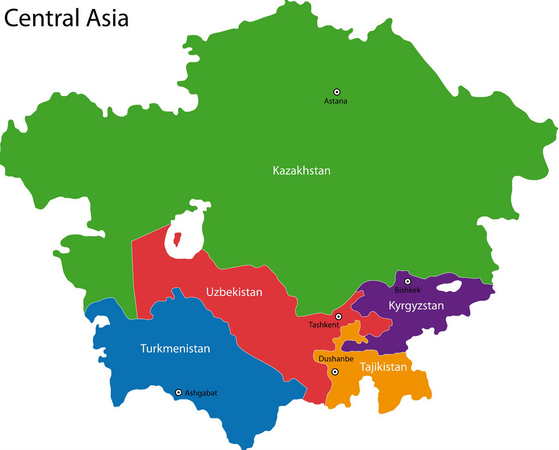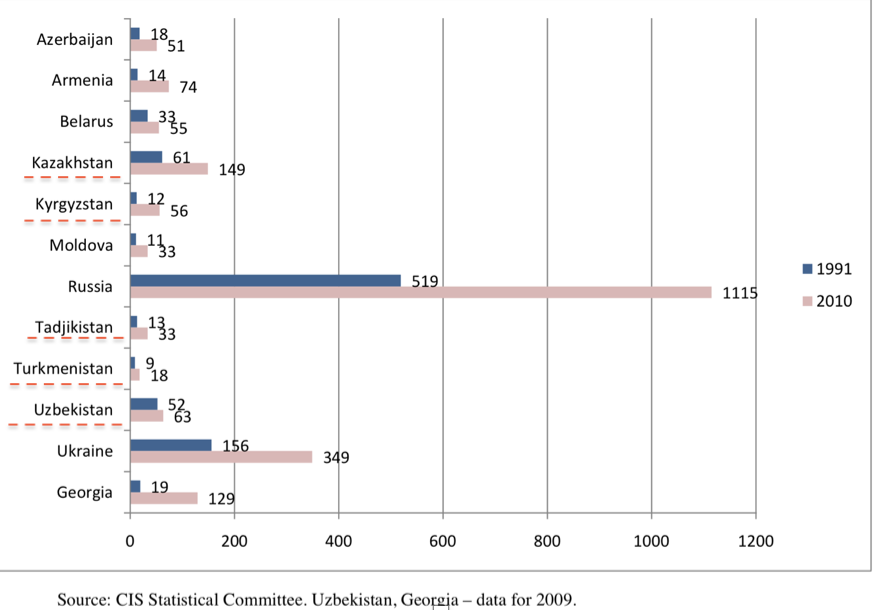By Mansur Islamov; Skokie, Illinois
In the heart of the Eurasia continent lies Central Asia, a region rich in history and culture. This region benefits from a blend of national identities that have been cultivated through centuries. Central Asia, as it is defined today, is comprised of five former Soviet republics: Kazakhstan, Kyrgyzstan, Tajikistan, Turkmenistan, and Uzbekistan. All these countries speak Turkic language with exception of Tajikistan. Central Asian countries were under the influence of Russia for the last 120 years.
Education System in Central Asian countries
The combination of rich, deep history and culture, made this region one of the most educated in the world, despite the government’s limited education budget (Table 1).
Table 1 Countries GDP on Education (2017) (All amounts in billion USD)* 
Table 2 Youth Literacy Rate (15-24 years) 
International Education for Central Asian Students
As mentioned above, Russia’s impact on Central Asian countries has significantly influenced the local education systems and education policies. Students receive massive educational support from Russian universities, both during the Soviet era and after. There are still large number of international students, in particular Central Asian students, all across Russia today. However, in the past decade, Central Asian students who are studying in major cities of Russia, triggered rising xenophobia from local residents.
Central Asia shares the same education system with Russia, which is not being dynamic nor productive in the modern scientific field. According to US.news.com, the best ranked school of Russia is Lomonosov Moscow State University and which is ranked #267 among Best Global Universities (April 2018).
Because of these two major factors above, rising xenophobia and declining educational standards, Central Asians are looking for better options, outside of Russia for their higher education needs. At the same time, and partly as a consequence, the pathway of studying in Western countries, on top of them the United States, has become increasingly attractive.
The Benefit of US Education for Central Asian Students
First, students who study in the US make positive economic and social connections as well as other forms of network ties with the Western world. These interactions will help contribute to their own countries’ integration into the global economy. Most Central Asian economies heavily rely on natural resources. International students with advanced knowledge returning home will help their country to build more diversified economies, so that the next generation will not sorely rely on their “God given” recourses.
Second, students can benefit from America’s open society. International students who attend US schools tend to be more open to universal values, including democracy, rule of law, etc. These values can be very helpful for international students in their future business life on a global stage.
Third, the increasing international student flow will stimulate local authorities back at home to take new actions on improving their own education standards. There are already clear signals of positive reforms on-going that governments in this region have begun to increase their education funding. Russia has taken new actions to attract foreign students in the region and around globe. Moreover, these actions followed by the economic benefits will in return help combat the xenophobia among local residents and foreign students.








